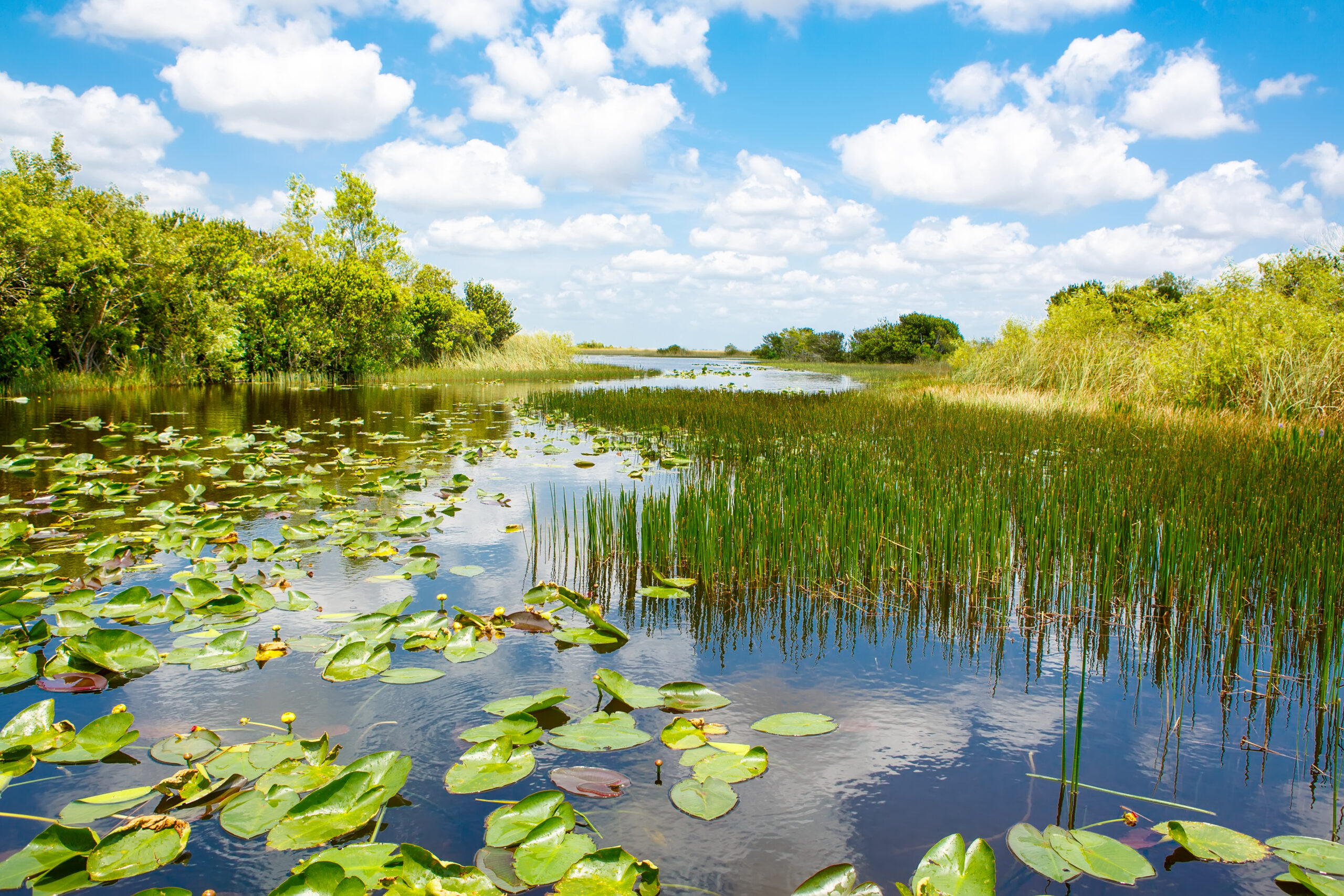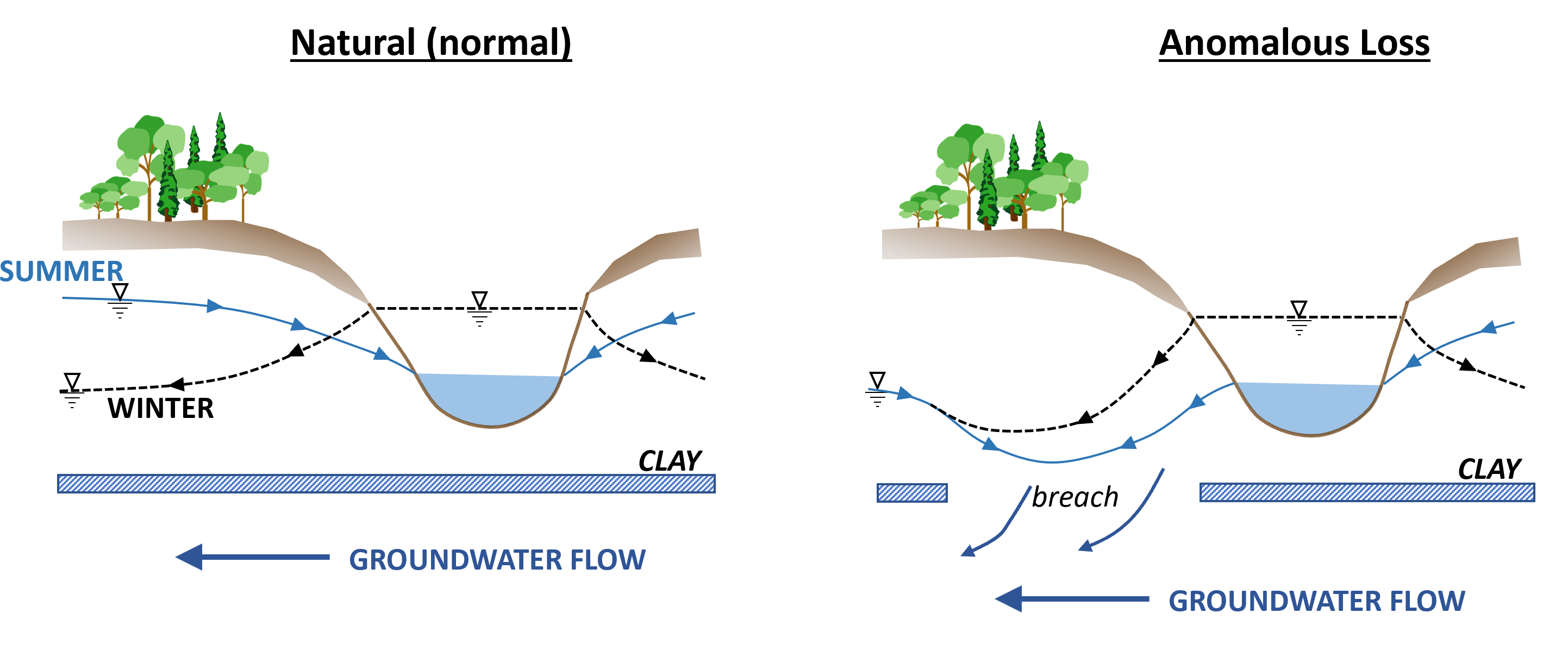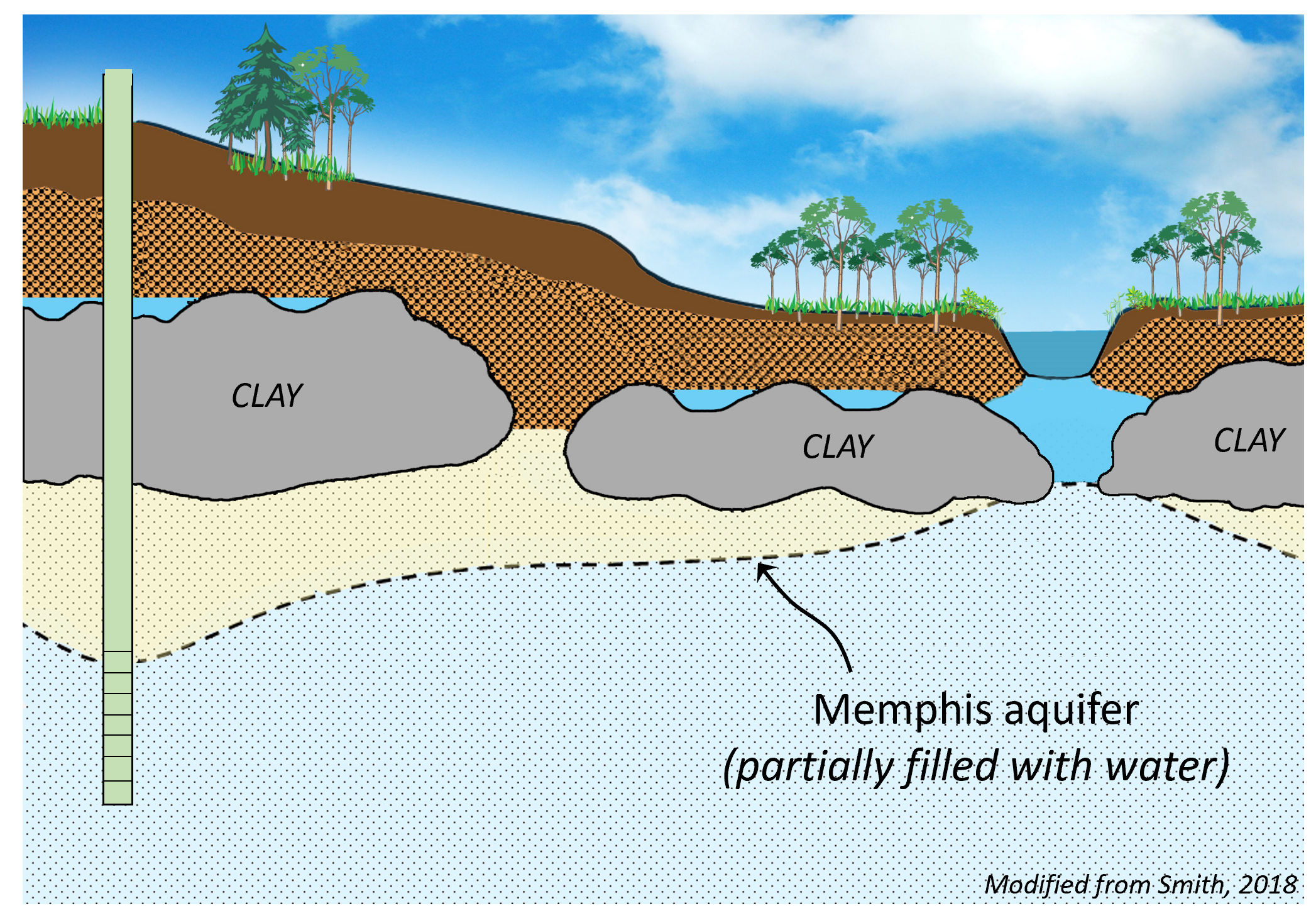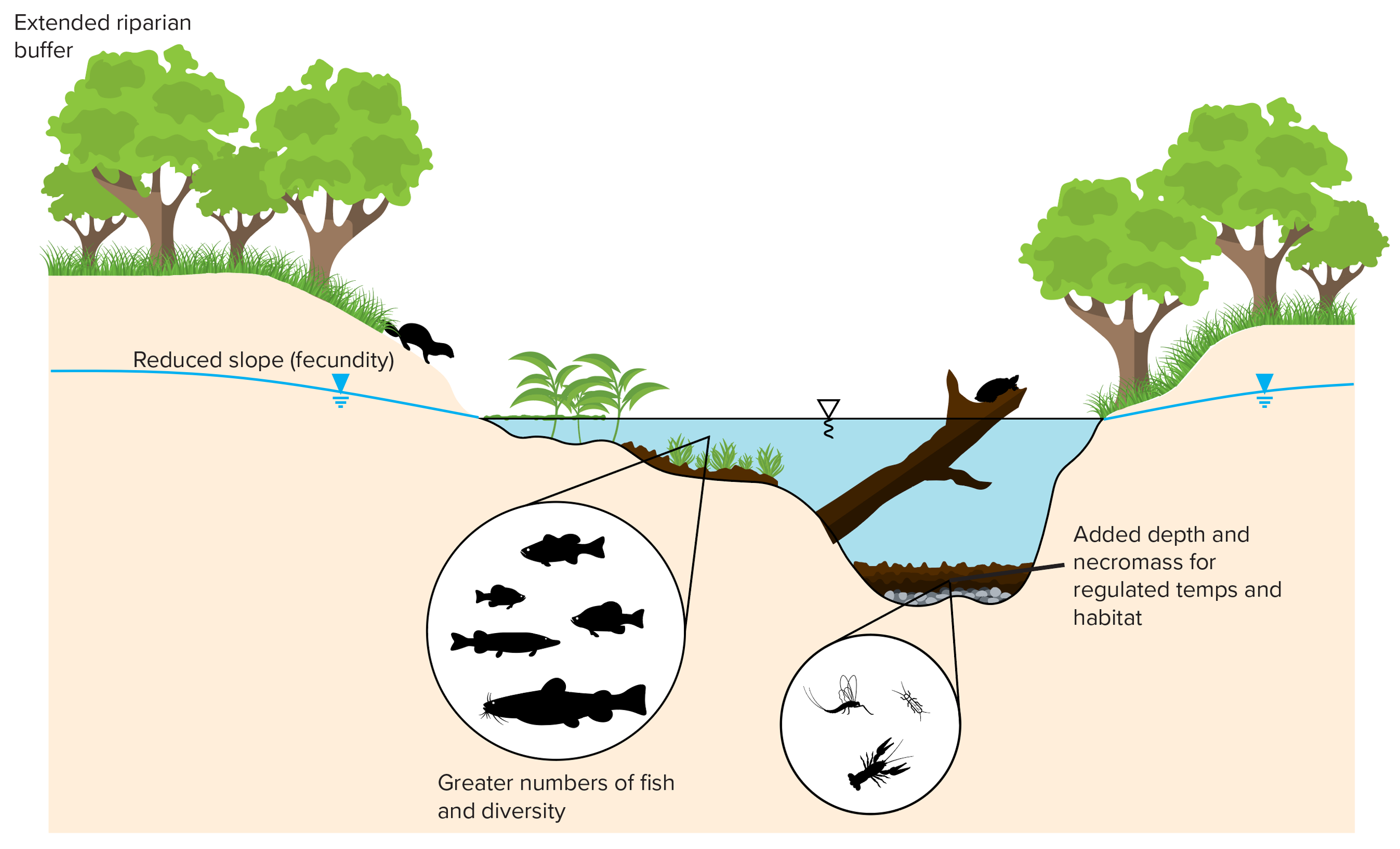Groundwater Surface Water Interaction
Groundwater Meets Surface Water
When you think of the hydrologic cycle and its components like precipitation, infiltration, runoff, and others, it is best to not think of them as individual processes but instead as linked together, part of an ever-changing cycle. We do this with surface water and groundwater. Surface water includes bodies of water like streams, lakes, and wetlands. Groundwater is water within an aquifer.
Groundwater Surface Water Interactions ![]()

Groundwater and surface water can be connected (no separation between the waters) or disconnected (space exists between the waters). Whatever the situation, water still moves between them.
Most of the regional rivers (Loosahatchie River, Wolf River, White River, and Mississippi River) have a direct connection to our groundwater. Depending on the season, the direction of water exchange may switch.

How is this possible?
During this time, groundwater is giving water to them. During wetter times of the year like January-March, rivers are flowing full (maybe even flooding) and may contribute water to the groundwater.
Why is this important?
Stream ecosystems rely on this exchange for their survival because of differences in water quality, temperature, and sustainment of stream habitat. When surface water contributes to groundwater:
 it increases availability, yet
it increases availability, yet
 it can impact quality.
it can impact quality.
CAESER investigates this exchange for a few reasons:
- Loss of Surface Water
Anomalous loss of surface water to groundwater during the dry months can be a sign of a nearby breach in the protective clay layer to the Memphis aquifer

- Water Table Shape
Streams typically serve as discharge locations for groundwater, so they help define the shape of the water table (hills and valleys) which helps answer the questions: how much is moving and where is it going?
- Helps Sustain Water Levels
Streams can function as an additional water source for the Memphis aquifer in areas where breaches in the clay layer are present. This extra input could help sustain groundwater levels and prevent the Memphis aquifer from going unconfined due to stressors like pumping.

- Ecosystem Health
Sustained groundwater levels in streams promote ecosystem habitat and improved health of our streams.

- Loss of Surface Water
Anomalous loss of surface water to groundwater during the dry months can be a sign of a nearby breach in the protective clay layer to the Memphis aquifer

- Water Table Shape
Streams typically serve as discharge locations for groundwater, so they help define the shape of the water table (hills and valleys) which helps answer the questions: how much is moving and where is it going?
- Helps Sustain Water Levels
Streams can function as an additional water source for the Memphis aquifer in areas where breaches in the clay layer are present. This extra input could help sustain groundwater levels and prevent the Memphis aquifer from going unconfined due to stressors like pumping.

- Ecosystem Health
Sustained groundwater levels in streams promote ecosystem habitat and improved health of our streams.

Anomalous loss of surface water to groundwater during the dry months can be a sign of a nearby breach in the protective clay layer to the Memphis aquifer

Streams typically serve as discharge locations for groundwater, so they help define the shape of the water table (hills and valleys) which helps answer the questions: how much is moving and where is it going?
Streams can function as an additional water source for the Memphis aquifer in areas where breaches in the clay layer are present. This extra input could help sustain groundwater levels and prevent the Memphis aquifer from going unconfined due to stressors like pumping.

Sustained groundwater levels in streams promote ecosystem habitat and improved health of our streams.
